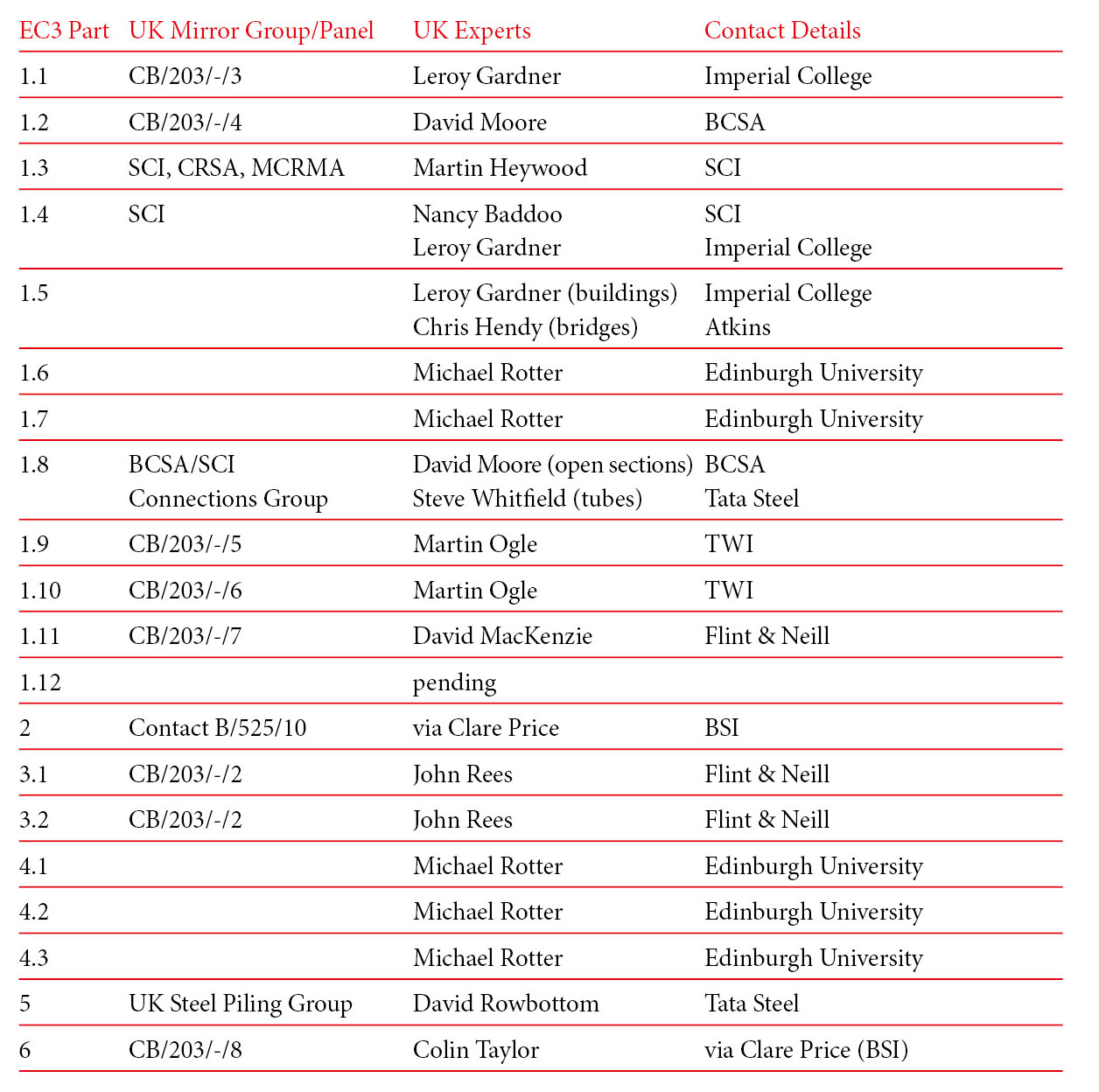Technical
Steel design can be simple using EC3
Many steel designers still hanker for the simpler days of BS 499. But could a simple BS 449-like approach emerge from the apparent complexity of Eurocode 3, asks Charles King.
The arrival of Eurocode 3 calls us to reconsider our approach to design. Design can be complex, for those pursuing economy of material, but it can be simplified for those pursuing speed and clarity. Many designers feel depressed when new codes are introduced. There are new formulae and new complications to master, even though there seems to be no benefit to the designer for the majority of his regular workload.
If we study the reasons for the increasing complexity of codes, we can see how it might be possible to simplify design. The increasing complexity generally arises because:
- Earlier design practice over-estimated strength in a few particular circumstances, causing safety issues
- Earlier design practice under-estimated strength in various circumstances affecting economy
- New forms of structure evolve and codes are expanded to included them.
However, simple design remains a possibility if:
- A scope of application is defined to avoid the circumstances and the forms of construction in which strength is over-estimated by simple procedures.
- The designer is not too greedy in the pursuit of the least weight of steel from the strength calculations.
- The code requirements are presented in an easy-to-use format, such as the tables of buckling stresses in existing BS codes.
Not pursuing least weight might seem disloyal to the client, but generally it is not. It is well known that least weight of steel usually does not result in the cheapest structure, because lighter members often need more stiffening or strengthening at connections. In addition, many structures are governed by deflection and vibration criteria, so that the strength is not the critical issue for many members.
Observing these points, it is possible to derive design procedures that could be called “Eurocode 3 kept simple”. To demonstrate the simplicity of such a procedure, it is compared with BS codes in Table 1 for the design of an unrestrained beam. The comparison includes both BS 449, long regarded as the best code for simplicity, and the simplest BS 59501 procedure. The number of steps is similar in each case.
Those who have read EN 1993-1-1 in detail may be surprised by the simplifications in the procedure entitled “Eurocode 3 kept simple”. Several procedures in the Eurocode document are omitted because other steps in Table 1 ensure that the calculations comply with the Eurocode even though the procedures do not appear. The explanations are as follows:
- The classification of the cross-section can be omitted because the use of a UB for bending alone in S275 ensures that the beam is at least Class 2, allowing the use of the plastic modulus, Wpl. (This approach has long been used in the application of BS 449 which also has slenderness limits for flanges and webs. They are rarely calculated when using UBs and UCs because designers expect these sections satisfy the limits for S275.)
- Shear buckling of the web has not been checked because S275 UBs do not have web slenderness sufficient for this type of buckling.
- The moment gradient has not been considered. The tabulated stresses assume uniform moment even though this may under-estimate the buckling resistance of the beam.
- The cross-section check for bending has been omitted, because it can never be critical in a uniform beam if the buckling check assumes a uniform moment and the coincident shear is not more than 50% of the shear resistance.
- Reduction of moment resistance by high coincident shear force has been avoided by checking that the shear force is not more than 50% of the shear resistance.
- The shear area used above is simple whereas the formula in EN 1993-1-1 is complicated. However, for UBs, the simple area above is always slightly conservative and therefore safe.
- The formulae in Eurocode 3 do not explicitly show l/iy, but re-arrangement of the formulae in the EN 1993-1-1 allows this tabulation to be performed, because the fundamental approach of the Eurocode is also used by BS 5950 and BS 449.
(The steps 1 to 5 above have also been omitted from the BS 5950 procedure in Table 1 for the same reasons.)
Table 1 only shows the procedure for an unrestrained beam, but simplifications are possible for several other aspects of design, such as columns in simple braced frames. It is hoped that SCI will produce simplified guidance of this type suitable for rapid design both in industry and for universities.
The Eurocode 3 symbols are new to engineers using BS codes, so the symbols used in Table 1 are explained in Table 3.














